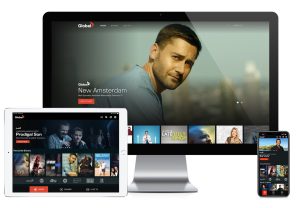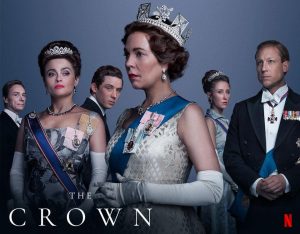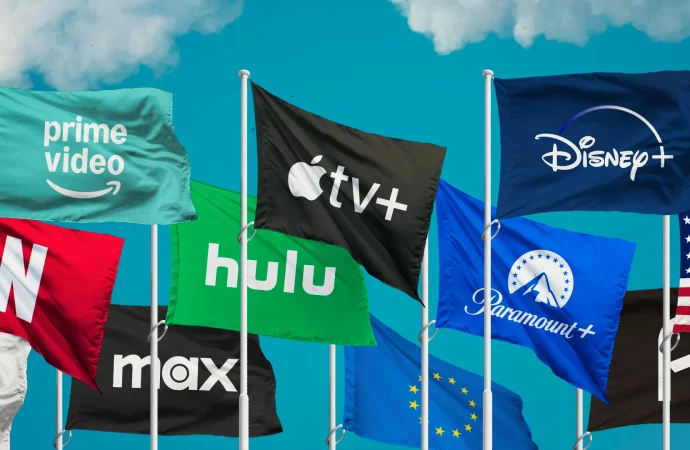Introduction The television industry has undergone a profound transformation in recent years, largely driven by the rise of streaming platforms. These platforms have disrupted traditional television networks, offering viewers on-demand content and personalized viewing experiences. As streaming services become increasingly popular worldwide, their impact on global television is undeniable. This article will explore the influence
Introduction
The television industry has undergone a profound transformation in recent years, largely driven by the rise of streaming platforms. These platforms have disrupted traditional television networks, offering viewers on-demand content and personalized viewing experiences. As streaming services become increasingly popular worldwide, their impact on global television is undeniable. This article will explore the influence of streaming platforms on global television, examining their role in content consumption, the evolution of TV shows, and the future of television in the digital age.
The Rise of Streaming Platforms

Image by: Yandex.com
Streaming platforms have experienced explosive growth in the last decade. Services like Netflix, Amazon Prime Video, Disney+, and Hulu have emerged as major players in the entertainment industry, offering a vast array of content at the fingertips of viewers. Unlike traditional cable or satellite television, streaming platforms provide flexibility by allowing users to watch content on-demand across multiple devices, such as smartphones, tablets, laptops, and smart TVs.
One of the key factors behind the rise of streaming platforms is their subscription-based model, which gives consumers more control over what, when, and where they watch. In contrast to the rigid programming schedules of traditional TV, streaming services have introduced a new era of personalized entertainment. With the ability to binge-watch entire seasons of shows at once, viewers are no longer bound by weekly episode releases or the need to be home at a specific time.
Changing Viewing Habits: The Shift from Traditional TV to Streaming

Image by: Yandex.com
The shift from traditional television to streaming platforms has been profound. According to recent studies, a significant number of consumers now prefer streaming over traditional cable or satellite TV. This change can be attributed to several factors, including the increasing availability of high-speed internet, the affordability of streaming services, and the desire for on-demand content.
Additionally, streaming platforms have revolutionized the way content is consumed. In the past, viewers had to wait for their favorite shows to air on a specific day and time. Now, with streaming services, viewers can access an entire library of shows and movies anytime they choose, which gives them greater flexibility in their entertainment choices.
How Streaming Platforms Are Changing Content Creation

Image by: Yandex.com
Streaming platforms have changed the way content is made. TV shows and movies are now being created specifically for these platforms, leading to a surge in high-quality, original programming. Shows like Stranger Things on Netflix or The Mandalorian on Disney+ are examples of how streaming services have raised the bar in terms of production value and storytelling. These platforms are not limited by the usual rules of traditional TV, allowing for more creative freedom. This shift has brought fresh ideas and new genres to audiences, attracting viewers who might not have been interested in traditional TV shows.
Global Content Availability: Breaking Down Regional Barriers

Image by: Yandex.com
One of the most significant ways in which streaming platforms have impacted global television is by breaking down regional barriers. In the past, TV networks were often limited by geographic location, with specific content being available only in certain countries or regions. Streaming platforms, however, have globalized television content by offering it to audiences worldwide.
For example, Netflix has invested heavily in producing and acquiring international content, making it accessible to viewers across borders. Shows like Money Heist from Spain and Sacred Games from India have garnered global audiences, proving that high-quality content can thrive in international markets. This has led to an increase in the demand for diverse and multicultural content, allowing for a more inclusive representation of global cultures on television.
Impact on Traditional TV Networks
The rise of streaming platforms has had a profound impact on traditional television networks. With the increasing popularity of on-demand content, many viewers are cutting the cord and canceling their cable subscriptions. This trend has forced traditional TV networks to adapt or risk losing relevance in the digital age.
In response, some traditional networks have launched their own streaming services, such as NBC’s Peacock and CBS All Access (now rebranded as Paramount+). These platforms aim to capture the growing demand for streaming content while still maintaining their traditional TV offerings. However, the success of these services remains mixed, as many consumers still prefer the established giants like Netflix and Amazon Prime Video.
The Rise of Original Content: How Streaming Platforms Are Shaping TV Shows

Image by: Yandex.com
One of the most notable impacts of streaming platforms on global television is the rise of original content. In the past, traditional TV networks were the primary creators of popular TV shows. However, streaming platforms like Netflix and Amazon have invested heavily in creating their own original content, changing the dynamics of television production.
Shows like Stranger Things, The Crown, and The Mandalorian have not only gained massive popularity but have also redefined what makes a TV show successful. With their global reach and ability to tailor content to diverse audiences, streaming platforms have become key players in shaping the kinds of stories told on television. This has led to an increase in the quality and diversity of TV shows, as streaming platforms have more freedom to experiment with different genres, storytelling techniques, and formats.
Challenges Faced by Streaming Platforms
Despite their success, streaming platforms face several challenges. One of the biggest hurdles is the increasing competition among platforms. With so many options available, it can be hard for platforms to stand out and keep subscribers. Another challenge is the rising cost of creating high-quality original content. Producing shows and movies can be expensive, and platforms need to balance content creation with profitability. Additionally, streaming platforms must navigate issues like licensing rights, regional restrictions, and internet access, which can affect their availability in certain areas.
The Cost of Streaming Services
While streaming platforms are often more affordable than traditional cable TV, the cost of multiple subscriptions can add up. Many people now subscribe to several streaming services, each offering a different library of content. This has led some to question whether streaming services are really cheaper than cable when you add up the total cost. In addition, some platforms have started raising their prices, making it harder for some consumers to keep up with subscriptions. As the market continues to grow, streaming services may need to find ways to keep costs competitive and offer more value to subscribers.
Personalization and Recommendations

Image by: Yandex.com
One of the biggest advantages of streaming platforms is their ability to personalize content. By using data about what viewers watch, streaming services recommend shows and movies that fit their tastes. This personalized experience makes it easier for viewers to discover new content they might enjoy. It also saves time, as viewers don’t have to search through endless options to find something to watch. As streaming platforms continue to collect more data, the recommendations will likely become even more accurate, helping viewers discover content tailored to their interests.
The Global TV Market: A Comparison of Streaming Platforms
As streaming platforms continue to expand globally, the competition among services has intensified. Each platform offers unique features, pricing models, and content libraries to attract subscribers. Below is a comparative table that outlines some key characteristics of popular streaming platforms in the global market:
| Streaming Platform | Content Type | Subscription Price | Availability | Original Content |
|---|---|---|---|---|
| Netflix | Movies, TV Shows, Documentaries | $6.99-$29.99/month | Global | Yes |
| Amazon Prime Video | Movies, TV Shows, Sports | $8.99 – $14.99/month (Prime membership) | Global | Yes |
| Disney+ | Movies, TV Shows (Disney, Marvel, Star Wars, Pixar) | $7.99 – $10.99/month | Global | Yes |
| Hulu | Movies, TV Shows, Documentaries | $7.99 – $17.99/month | US only | Yes |
| Apple TV+ | Movies, TV Shows (Original Content) | $9.99/month | Global | Yes |
| Paramount+ | Movies, TV Shows, Sports | $5.99-$19.99/month | Global | Yes |
This table provides an overview of the most popular streaming platforms and how they differ in terms of pricing, content offerings, and availability. As the streaming landscape continues to evolve, new platforms will emerge, and existing ones will adapt to the growing demand for diverse content and competitive pricing.
The Future of Global Television: Trends to Watch

Image by: Yandex.com
Looking ahead, several trends are shaping the future of global television. First, the demand for live streaming is on the rise. Services like YouTube TV, Sling TV, and Hulu Live TV are catering to viewers who want live programming, including sports events, news, and more. This trend is likely to continue as streaming platforms diversify their offerings.
Second, the growth of interactive and immersive content is expected to reshape the television landscape. Virtual reality (VR) and augmented reality (AR) technologies are making their way into television production, offering new ways for viewers to engage with content. As these technologies mature, they could change the way we experience television altogether.
Finally, the growing importance of artificial intelligence (AI) and machine learning in content recommendation algorithms is another trend to watch. As streaming platforms collect more data about user preferences, they will be able to offer increasingly personalized recommendations, further enhancing the user experience.
Analysis Table: Streaming Platforms’ Impact on Global TV
| Aspect | Traditional TV | Streaming Platforms | Impact |
|---|---|---|---|
| Content Availability | Limited to scheduled programming | On-demand content, global reach | Greater access to diverse content |
| Viewing Flexibility | Fixed programming schedule | Watch anytime, anywhere | More freedom and flexibility for viewers |
| Subscription Model | Pay-per-view or cable subscription | Subscription-based with free trial options | Affordable and customizable pricing |
| Original Programming | Limited, advertiser-driven | Extensive, content-focused | Increase in quality and diverse storytelling |
| Global Reach | Geographically restricted | Available in multiple regions | Greater international content exchange |
Comparative Table: Popular Streaming Platforms in Global Television
| Platform | Content Offering | Subscription Price | Global Reach | Original Content |
|---|---|---|---|---|
| Netflix | Movies, TV Shows | $6.99-$29.99/month | Global | Yes |
| Amazon Prime | Movies, TV Shows | $8.99 – $14.99/month | Global | Yes |
| Disney+ | Movies, TV Shows | $7.99 – $10.99/month | Global | Yes |
| Hulu | Movies, TV Shows | $7.99 – $17.99/month | US only | Yes |
| Apple TV+ | Original Movies, TV Shows | $9.99/month | Global | Yes |
| Paramount+ | Movies, TV Shows, Sports | $5.99-$19.99/month | Global | Yes |
This table highlights the different aspects of each platform, including content offerings, pricing, and availability.
Conclusion
Streaming platforms have revolutionized the global television industry by providing on-demand access to content, breaking down regional barriers, and driving the creation of original, diverse shows. Traditional TV networks have had to adapt to these changes, and the competition between streaming services continues to intensify. The future of global television is bright, with innovations in interactive content, VR/AR, and AI offering exciting new possibilities for how we consume entertainment.
















